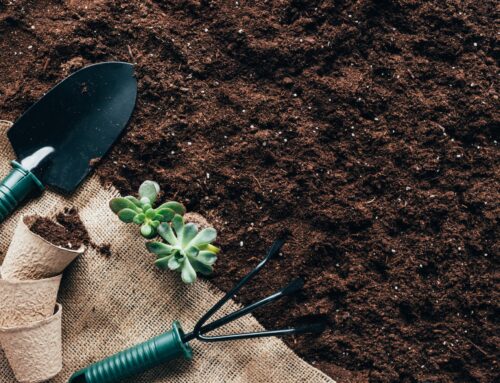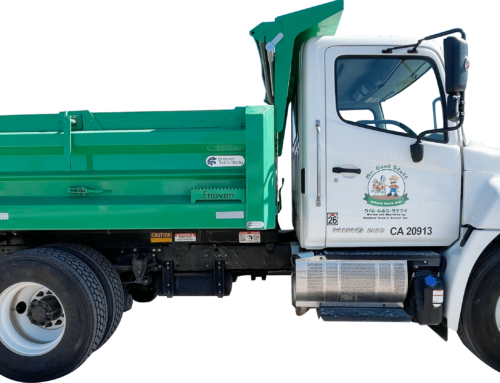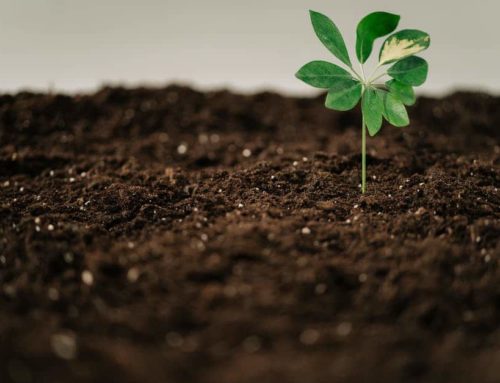What Kind of Soil Is Best for Growing Plants? Your Landscaping FAQs
Professional landscapers and amateur gardeners all agree that the quality of the soil is the most important factor in growing plants. Chances are that the soil native to your property is not ideal for growing, at least not yet.
As our business is all about providing the best quality soil and soil mixing ingredients, we get many questions about it every day. This article was written in the spirit of providing the answers to these common questions for our current and future customers.
Just as you wouldn’t feed your children low-quality food, the plants you grow deserve special attention as well. Keep reading for our expert answers to important landscaping faq.
What Is Medium Bark?
Laying a layer of tree bark is the most popular form of mulching for good reason. Tree bark is a natural way of controlling weeds, insulating plants against hot and cold spells, and adding color and beauty to your landscaping or gardening project. There are several different sizes and mixtures of sizes of bark to choose from including:
- Shredded or fine bark
- Medium bark
- Course bark
Medium bark refers to the size of the bark pieces which are medium-sized on the scale. Medium bark is a decorative bark laid between plants that provide insulation, extra nutrients over time, and a bold beautiful foundation for areas between plants.
What Are Medium Pine Bark Nuggets?
Medium bark nuggets are smaller than the chunks of medium bark mulches but bigger than chipped or shredded bark. Of course, pine bark nuggets are made from the bark of pine trees. They are light brownish yellow and absorb water well, reducing waterlog.
They also regulate soil temperature and are excellent at controlling weed growth in landscaping beds. Pine bark is slow to decompose so it lasts a long time.
Is Medium or Small Landscaping Bark Better?
This largely depends on what you are growing and how often you plan to replace the mulch. Medium-grade landscaping bark is more attractive and lasts longer than small nuggets, fine bark, or shredded bark. However, larger nuggets don’t hold well on slopes.
The smaller the bark pieces the less effective they are in insulating the soil and the more easily they are blown and kicked out of place. Also, smaller pieces of bark won’t keep weeds at bay as long or as well as medium bark.
Is Orchid Bark a Good Medium for Anthurium?
Flowers and particularly anthuriums require certain soil conditions to grow well. Soil mixed with bark gives the flowers better access to air and helps to control water conditions. Too much or too little air and water will kill off your anthuriums.
Seventy percent of orchids don’t grow well or at all in soil or dirt. Specialty potting soils mixed with bark are highly recommended for flower gardens of anthuriums and many other orchids.
What Trees Have Red Bark?
Red bark is a popular bark to use in landscaping beds as the even red color brightens up the bed and contrasts well with plants. Many types of trees including some cedar trees, willow trees, and Red Twig Dogwood have bright red bark. The tone and brightness of red barked trees change according to the season, with winter often the brightest.
What’s the Difference Between Bark on Trees and Red Bark I Can Buy?
The bark of trees changes color and tone depending on the season and age of the tree. For example, the bark of white willow trees is bright red when the tree is young and short and less so as it grows taller and older.
However, most commercially available red barks are not “all-natural”. In fact, most red bark mulch available on the market are not bark at all but wood chips.
The big difference in the bark on trees and red bark used in landscaping is when on the tree the outside of the bark is lighter in color, often grayish, brown, or even white. The vibrant rich and bright red color of landscaping red bark nuggets is achieved by enhancing the brownish-red color of common barks with red dye.
Where Can I Buy Red Bark Chippings?
Almost every gardening store has at least one type of red bark chippings. The quantity, price, and quality vary greatly by manufacturer and where the bark is sourced.
Areas of the country close to a logging industry have greater and cheaper access to bark chippings as they are a byproduct of the logging industry. Mr. Good stuff carries high-quality red bark in 2 Cu. Ft. bags ready to deliver straight to your Sacramento landscaping project.
How to Install a Black Bark Landscape?
We get this question a lot. Black bark gives the landscaping bed a consistent dark soil look. The textured dark color of black bark landscaping provides a rich and freshly tilled look all year round.
IMPORTANT NOTE: Not all black mulches are created the same. Many so-called black wood bark mulches have very little to no bark in them. They are actually shredded recycled timber which is not ideal as they contain trace chemicals from the recycling process.
To install mulch, first edge the bed. Next, till the ground and remove any weed growth. Apply fertilizer and mix in growing soil to enhance the nutritional content of the topsoil.
Mulches soak up nitrogen out of the soil as they decompose. If your soil sample testing shows low nitrogen levels it is extra important to mix in some potting soil enriched with nitrogen.
Spread the black bark mulch by hand out of a wheelbarrow. Apply a generous layer, but be careful not to overdo it (no more than 3 inches). Too thick a layer of mulch will absorb too much rainwater, cake up, and gross-looking molds will grow on the surface.
What Is 50/50 Soil?
When gardeners and landscapers refer to 50/50 soil they are talking about an even mix of compost and topsoil. When you are starting with less than ideal topsoil quality mixing or applying premixed soil 4 to 6 inches deep will make all the difference in the health of the plants.
The compost or organic matter mixed in with topsoil provides a rich environment for plants to take root. The compost provides the young plants plenty of nutrition to grow strong and healthy.
What Is the Best Topsoil?
There is no magic recipe for topsoil as different plants have different needs. Yet, there are certain requirements of all plants and some good guidelines to follow. Repurposing and enhancing the topsoil you have is certainly possible no matter its condition.
The best topsoil is rich in nutrients but not too rich as there is such a thing as overfeeding plants. Good topsoil has aerators such as perlite or wood fibers, compost or fertilizer, around 10-25% clay, and close to 25% silt, and the rest sand. There is a distinct difference between gardening soil and topsoil. Here is a good guide.
How Do I Grow Grass in Sandy Soil?
Sand in the soil is a fine gritty texture, a product of millions of years of eroded minerals and rocks. Some sand in the soil is not only okay but beneficial in keeping the soil from washing away nutrients and working rainwater down to the roots of your plants.
Some plants grow better in sandy soil than others, such as watermelon plants. For most plants, a high concentration of sand will starve them of water as sandy soil tends to go dry quickly as the water filters down right past the root level.
Grass doesn’t grow well in sandy soil. If your soil is 30% or more sand, grass will not grow well in it. Mix growing soil with the sandy soil to make it more suitable for grass to thrive. If your soil is light on the sand side you may want to add sand to your topsoil.
Can I Grow Plants Without Soil?
Absolutely, very well in fact. There are few excellent methods of growing plants indoors without soil, namely hydroponics, aquaponics, and aeroponics.
Hydroponics
Hydro means water. However, water is the medium in which plants are fed minerals and you wouldn’t want to try growing plants in tap water only. With a proper hydroponics system plants can grow faster, bigger, and stronger than traditional soil growing.
The plants are sprouted and then suspended at the roots on a floating pad in a liquid nutrient solution. Air bubbles are created with an air pump much like in a fish tank to give the roots exposure to air. A water pump circulates the mineral solution in order to evenly and consistently provide the roots with nutrition.
Aquaponics
Aquaponics is related to aquaculture which means fish cultivation. Basically, an aquaponics system is a combination of a fish tank and a hydroponic plant-growing tank. Aquaponics allows for a self-contained ecosystem that supports both the fish and the plants.
The introduction of fish and other aquatic animals is a natural way of providing nutrients for both. The waste of the fish enriches the water with nutrients and the plant provides food for the fish in a continuing cycle.
Maintaining this system is nearly identical to maintaining a fish tank. The water needs to be filtered and restored as it is used up by the plants and evaporates into the air.
Aeroponics
Aeroponics work much the same way as hydroponics except the mineral-rich water is misted onto the plant’s roots instead of emerging in a mineral-rich solution. Aeroponics grows plants extremely fast but the unrestricted environment makes the plant vulnerable to pests and air-born diseases.
What Is the Best Soil for Growing Plants?
Please understand that there is no perfect soil for growing plants. There are only soil mixtures that are suitable for most plants. Topsoils with the proper amount of sand, silt, clay, and minerals can further be fine-tuned to meet the ideal growing conditions for different plants.
Mr. Good Stuff growing soil and bark mulch is designed to provide the best possible environment for your plants to thrive. Place your order of soil and bark today and tomorrow start the garden, yard, or flower bed you always wanted.






